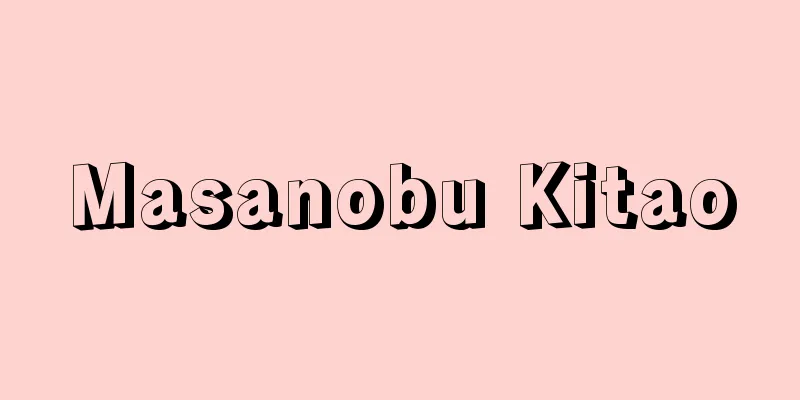Security Treaty Struggle - Anpo Tousou

|
The largest national movement in Japan's postwar history, unfolded in opposition to the revision of the Japan-US Security Treaty. The Security Treaty Struggle can be divided into two phases, in 1960 (the 1960 Security Treaty Struggle) and 1970 (the 1970 Security Treaty Struggle). [Ara Takashi] 1960 Security Treaty StruggleA national movement that took place from 1959 to 1960 in opposition to the revision of the Japan-US Security Treaty. The Security Treaty, signed at the same time as the San Francisco Peace Treaty on September 8, 1951, permitted the stationing of US troops in Japan for the purpose of "international peace and security in the Far East," but was a unilateral treaty under which the US assumed no obligation to defend Japan. Even at the time, there were voices of opposition among the public on the grounds that the Security Treaty violated Article 9 of the Constitution and would not contribute to world peace or the security of Japan. [Ara Takashi] ProgressIn September 1958, the Kishi Nobusuke Cabinet dispatched Foreign Minister Fujiyama Aiichiro to the United States to begin negotiations with Secretary of State Dulles on revising the Security Treaty. The focus of the revision was narrowed down to eliminating the unilateral nature of the treaty and introducing a prior consultation system. There was growing opposition from the public for a number of reasons: the new treaty required the expansion of the Self-Defense Forces, most actions of the U.S. military were not subject to "prior consultation," the treaty did not limit the areas to which it applied, and the new treaty revised the unilateral relationship and came closer to a "mutual defense" treaty, making it a de facto military alliance, and Japan would be more deeply integrated into U.S. military strategy than ever before. The anti-Security Treaty struggle was formed after learning from the results of the movement based on a joint struggle organization that led to victory in the struggle against the revision of the Police Duties Execution Law (Police Duties Law Struggle) in the fall of 1958. In March 1959, the National Conference to Prevent the Revision of the Security Treaty was formed with the participation of 134 organizations, mainly Sohyo, Neutral Labor Union, Gensuikyo (Japan Council Against Atomic and Hydrogen Bombs), the Constitutional Protection Union, Peace Committee, and the Japan Socialist Party (the Communist Party was an observer). As the largest national unified action organization in Japan since the Second World War, the conference carried out 23 national unified actions by July 1960. At first, it was said that the Security Treaty was a heavy burden, but after the A-bomb and H-bomb Prohibition Conference in August 1959, the movement gradually gained momentum. The first turning point of the anti-Security Treaty struggle came in January 1960, when Kishi, the plenipotentiary representative, signed the treaty in the United States and the stage moved to the Diet. Although the struggle to prevent the signing was not effectively organized, when the dangers of the new treaty, such as the scope of the "Far East," the prior consultation system, and the right of the Diet to amend the treaty, were made clear in the Diet, petitions to the Diet were also made outside the Diet, and the opposition movement became more active. Moreover, when a US U-2 reconnaissance plane was shot down over the former Soviet Union in early May and it was revealed that the same type of plane was also stationed at Atsugi Air Base, public interest in the Security Treaty increased. In this situation, on May 19, 1960, following the House of Representatives Special Committee on Security Treaty, the Kishi Cabinet decided to force a vote on the Security Treaty at a plenary session late that night, with only the mainstream LDP faction excluding the opposition parties and anti-mainstream factions. The government's forcing its way through brought about a qualitative change in the breadth and depth of the Security Treaty struggle, marking a second turning point for the struggle. Students, intellectuals, union members, and ordinary citizens all voluntarily joined demonstrations and surrounded the Diet every day, and the movement spread explosively. Labor unions, centered around Sohyō, also went on protest strikes on both June 4 and 15. On June 10, President Eisenhower's secretary, Hagerty, who had come to Japan to arrange a meeting for his visit to Japan, was surrounded by demonstrators at Haneda Airport and had to escape to the US Embassy by helicopter. Meanwhile, within the opposition movement, there were differences of opinion over the movement's goals and methods, and it was not a unified struggle overall. Then the incident of June 15th occurred. The mainstream of the All-Japan Federation of Student Self-Governments, not satisfied with the "orderly" demonstrations, adopted the tactic of storming into the National Diet, but on the night of the same day, they clashed with police forces inside the National Diet building, and in the confusion, Tokyo University student Michiko Kanba died. Public opinion boiled over, and the Kishi Cabinet was forced to decide at a Cabinet meeting on the afternoon of the following day, the 16th, to postpone Eisenhower's visit to Japan. Meanwhile, the newspapers, which had played a major role in the development of the opposition movement until then, issued a "Joint Declaration" on the 17th, calling for the elimination of violence and the protection of parliamentarianism, and began to check the movement. The opposition movement continued on the 16th and 17th, and on the 18th, an unprecedented 330,000 people participated in a demonstration surrounding the National Diet, and the movement gained momentum. On the 19th, the new security treaty was automatically ratified, and Prime Minister Kishi announced his retirement the following day, the 20th. [Ara Takashi] significanceThe Security Treaty struggle failed to prevent the treaty from being revised, but it did prevent President Eisenhower from visiting Japan and forced the Kishi Cabinet to resign. As the opposition movement was not united, opinions on the Security Treaty struggle were divided, which later became one of the factors that led to the division of the progressive camp. The Security Treaty struggle developed into a major national movement over a period of a year and a half because many people believed that the Security Treaty did not necessarily guarantee peace for Japan. Furthermore, the movement gained momentum after April 19, 1960 because many people perceived the government's forced vote as a challenge to democracy itself. The significance of the Security Treaty struggle was that it demonstrated that postwar pacifism and democracy were beginning to take root among the people. [Ara Takashi] The 1970 Security Treaty StruggleThe anti-Security Treaty movement, which took place mainly from 1969 to 1970, was carried out in order to prevent the revision of the Japan-US Security Treaty in 1970 (Showa 45). [Ara Takashi] ProgressAfter the 1960 Security Treaty protests, the Socialist Party and the Communist Party came into conflict over the guiding principle of the joint struggle organization, and the National Conference to Prevent the Revision of the Security Treaty went into a state of inactivity. With the accumulation of regional joint struggles and calls for reunification, the "National Conference to Oppose the Security Treaty and Protect Peace and Democracy" was re-established on March 28, 1961. However, with the split of the anti-nuclear and hydrogen bomb movement as a catalyst, the conference ceased to function after a unified action against the docking of US nuclear submarines in Yokosuka and Sasebo in March 1963. When the United States began bombing North Vietnam in February 1965, anti-Vietnam war movements grew around the world. In Japan, too, the Citizens' Alliance for Peace in Vietnam (Beheiren) was launched in April as a coalition of civic groups. As the anti-war movement developed, it had brought together over 300 groups by 1969 and played a part in the anti-Security Treaty movement in 1970. In 1968, campus conflicts spread across universities across the country, and this seemed to be a prelude to the 1970 Security Treaty protests. Prime Minister Sato Eisaku and the mainstream of the Liberal Democratic Party were wary of a repeat of the 1960 Security Treaty protests. In January 1969, riot police were deployed to remove the Zenkyoto students who had occupied Yasuda Auditorium at the University of Tokyo, but blockades by students and forced removal by riot police were repeated at various universities. In this situation, "preventing the revision of the Security Treaty in 1970" emerged as a task for the progressive parties and democratic peace forces. On Okinawa Day, April 28, the Socialist and Communist parties took joint action under the slogan "immediate, unconditional, complete return of Okinawa and the abolition of the Security Treaty," and 130,000 people participated in the central rally. Okinawa played an important role in the Vietnam War, but against the backdrop of demands for its return to the mainland, the US government decided in May 1969 to return Okinawa in 1972, remove nuclear weapons from Okinawa, and apply a prior consultation system to Okinawa's military bases. In August 1969, the Japanese government also rammed through the passage of the "Temporary Measures Law Concerning University Management," which gave the Minister of Education the authority to close and abolish universities. This marked the beginning of the calming of campus conflicts. In October 1969, the Liberal Democratic Party decided to "automatically extend the Japan-US Security Treaty for a considerable period of time." They aimed to overcome the issue of the 1970 Security Treaty revision by realizing the return of Okinawa and automatically extending the Security Treaty. In response, the Social Democratic Party, the Communist Party, Sohyo, and several hundred other organizations launched a unified action on October 21 under the slogans of "return of Okinawa, abolishment of the Security Treaty, and preventing Sato from visiting the US," with 80,000 participants from the central government and 860,000 from 600 locations nationwide. This was the largest action since the 1960 Security Treaty. Also, on November 13, before the Prime Minister's visit to the US, 940,000 members of 62 Unit Industrial Unions went on a unified strike on the mainland and in Okinawa. The joint statement issued at the Japan-U.S. summit meeting in November 1969 emphasized "adherence to the Japan-U.S. Security Treaty," included a clause on Korea stating that "the security of Korea is essential to the security of Japan," and acknowledged the return of Okinawa to Japan but confirmed the continued maintenance of the bases. Japan's active role within the security system was clearly stated. On Okinawa Day, April 28, 1970, the Social Democratic Party, the Communist Party and other parties took part in a unified action, but on June 23, the Japan-US Security Treaty expired after a fixed 10-year period and was automatically extended. The government emphasized the need to improve its self-defense capabilities and issued a statement saying, "We are now entering an era of stable, automatic continuation." 770,000 people took part in a nationwide unified action on this day, with the slogan "Abolish the Security Treaty." [Ara Takashi] significanceIn 1969, the largest unified action since the 1960 Security Treaty crisis and a strike with political goals took place, and the movement spread, with the media describing it as a "quiet upsurge." In the end, they were unable to prevent the automatic extension of the Security Treaty, and compared to 1960, the united struggle system was significantly behind schedule and did not lead to political reform. In that respect, there was a deep sense of defeat and frustration. The fierce student movement was divided and in a state of extreme confusion, and the power of the Japan Socialist Party and Sohyo was also declining. [Ara Takashi] "History of the Security Treaty Struggle" by Shinobu Seizaburo (1961, Sekai Shoin)" ▽ "Evaluation of the 1960 Security Treaty Struggle" by Kanda Fumito (included in "Historical Awareness and Issues in Historical Studies in the 1970s" edited by the Society of Historical Studies et al., 1970, Aoki Shoten)" ▽ "Security Treaty Struggle" by Oe Shinoo (included in "Iwanami Lecture Series on Japanese History 22" 1977)" ▽ "May 19, 1960" edited by Hidaka Rokuro (Iwanami Shinsho) ▽ "Contemporary Japanese History 4" edited by the Society of Historical Studies (1990, Aoki Shoten)" ▽ "New Edition of Modern Japanese History" by Fujiwara Akira et al. (1995, Otsuki Shoten)" [References] | | | | | | | | | | | | | | |Source: Shogakukan Encyclopedia Nipponica About Encyclopedia Nipponica Information | Legend |
|
日米安全保障条約の改定に反対して展開された、日本の戦後史上、最大の国民運動。安保闘争は1960年(60年安保闘争)と1970年(70年安保闘争)の2回に分けられる。 [荒 敬] 60年安保闘争日米安保条約の改定に反対して1959年(昭和34)から1960年にかけて展開された国民運動。1951年9月8日サンフランシスコ講和条約とともに調印された安保条約は、「極東における国際の平和と安全」を目的として米軍の日本駐留を認めたが、アメリカが日本への防衛義務を負わない片務条約であった。当時から国民のなかには、安保条約が憲法第9条に背馳(はいち)することや世界平和や日本の安全に資するものとはならない、などの理由で反対論が存在した。 [荒 敬] 経過1958年9月、岸信介(のぶすけ)内閣は、外相の藤山愛一郎をアメリカに派遣して国務長官ダレスと安保条約改定交渉に入った。改定の焦点は、条約の片務性解消と事前協議制に絞られた。国民のなかからは、新条約が自衛隊の増強を義務づけていること、米軍の行動の大半が「事前協議」事項になっていないこと、条約の適用地域が限定されていないこと、また新条約が片務的関係を改め「相互防衛」条約に近づくことから事実上の軍事同盟になり、以前にも増して日本がアメリカの軍事戦略に深く組み込まれること、などを理由として反対の声が強まった。 安保反対闘争は、1958年秋の警察官職務執行法改定反対闘争(警職法反対闘争)を勝利に導いた共闘組織に基づく運動の成果を学んで組まれた。1959年3月、総評、中立労連、原水協(原水爆禁止日本協議会)、護憲連合、平和委員会、日本社会党(共産党はオブザーバー)を中心に134団体が参加する安保改定阻止国民会議が結成され、同会議は第二次世界大戦後の日本における最大規模の国民的統一行動組織として翌1960年7月までに23次に及ぶ全国的統一行動を展開した。当初「安保は重い」といわれたが、1959年8月の原水禁大会を経ると少しずつ運動は盛り上がっていった。反対闘争の最初の画期は、1960年1月に岸全権団がアメリカで条約を調印し、舞台が国会に移ってからであった。調印阻止闘争は有効に組まれなかったが、国会で「極東」の範囲、事前協議制、国会の条約修正権など新条約の危険が明らかにされると、院外でも国会請願が行われ、反対運動は活発化していった。しかも5月上旬にはアメリカのU2型偵察機が旧ソ連上空で撃墜され、同型機が厚木飛行場にも配備されていることが暴露されると、国民の安保条約に対する関心も高まっていった。 このような状況のなかで岸内閣は、1960年5月19日、衆議院安保特別委員会に続いて、同日の深夜、本会議で、野党と反主流派を除く自民党主流派だけで安保条約を強行採決するという挙に出た。政府の強行突破は、安保闘争をその広さと深まりにおいて質的に転換させ、闘争の第二の画期を形づくることになった。学生、文化人、労組員、一般市民など多くの人々が自発的にデモに参加して連日国会を取り巻くという情勢となり、運動は爆発的に広がった。総評を中心とする労働組合も6月4日と15日の両日、抗議ストに入った。6月10日には、大統領アイゼンハワー訪日の打合せのため来日した大統領秘書のハガチーが羽田空港でデモ隊に包囲され、ヘリコプターでアメリカ大使館に脱出するという事件が起こった。 一方、反対運動内部には、運動の目標や方法をめぐって意見対立があり、全体として統一した闘争とはなっていなかった。そこに6月15日の事件が起こった。「整然」たるデモに飽き足らない全学連主流派は、国会突入戦術をとっていたが、同日夜、国会構内で警官隊と衝突、混乱のなかで東大生樺美智子(かんばみちこ)が死亡した。世論は沸騰し、岸内閣は翌16日午後の閣議でアイゼンハワーの訪日延期を決定せざるをえなくなった。一方、それまで反対運動の進展に大きな役割を果たしてきた各新聞は、17日「共同宣言」を発表し、暴力を排除し議会主義を守れと訴え、運動を牽制(けんせい)し始めた。反対運動は、16日、17日に続いて、18日には空前の33万人が国会包囲デモに参加し、盛り上がっていった。19日、新安保条約は自然承認され、岸首相は翌20日引退を表明した。 [荒 敬] 意義安保闘争は、条約改定を阻止できなかったが、大統領アイゼンハワーの訪日を阻止し岸内閣を退陣させた。反対運動内部が統一しきれなかったため、安保闘争の評価も大きく分かれることになり、それがのちに革新陣営の分裂をもたらす一つの要因となった。安保闘争が1年半の歳月にわたって大きな国民運動として展開されたのは、安保条約がかならずしも日本の平和を保障するものではないと国民の多くが考えていたからであった。また1960年4月19日以降の運動の高揚は、政府の強行採決が多くの国民に民主主義そのものへの挑戦として受け止められたからであった。安保闘争の意義は、戦後の平和主義と民主主義とが国民のなかに根づきつつあったことを示したところにあったといえよう。 [荒 敬] 70年安保闘争1970年(昭和45)の日米安全保障条約の改定を阻止するために展開された、おもに1969年から1970年にかけての反安保闘争。 [荒 敬] 経過60年安保闘争後、社共は共闘組織の指導方針をめぐって対立し、安保改定阻止国民会議は活動停止状況に陥った。地域共闘などの積み重ねと再統一の要求によって、1961年3月28日、「安保条約反対・平和と民主主義を守る国民会議」が再発足した。しかし原水爆禁止運動の分裂を契機として、1963年3月、横須賀(よこすか)・佐世保(させぼ)の米原潜寄港反対統一行動を最後にその機能は停止してしまった。 1965年2月にアメリカがベトナムで北爆を開始すると、世界各地でベトナム反戦運動が高まった。日本でも4月に市民団体の連合体として「ベトナムに平和を!市民連合」(ベ平連)が発足、反戦運動の展開のなかで、1969年までに300以上の運動体を結集し、70年安保反対運動の一翼を担った。 また1968年に全国の大学で学園紛争が拡大し、70年安保闘争の前哨(ぜんしょう)戦の様相を呈した。首相佐藤栄作をはじめ自民党主流は、60年安保反対闘争の再現を警戒した。1969年1月に東大安田講堂を占拠していた全共闘学生を排除するため機動隊が導入されるが、各大学でも学生による封鎖と機動隊による強行排除が繰り返された。この状況下で「70年安保改定阻止」が革新政党・民主平和勢力の課題として浮上した。4月28日の沖縄デーでは、沖縄の即時無条件全面返還・安保条約廃棄をスローガンに社共両党の統一行動が実現し、中央集会には13万人が参加した。 沖縄はベトナム戦争で重要な役割を担っていたが本土返還の要求を背景に、1969年5月アメリカ政府は、1972年に沖縄を返還し、沖縄の核兵器を撤去するとともに沖縄基地にも事前協議制を適用するとの方針を決定した。また、日本政府は1969年8月、大学の閉校廃校の権限を文部大臣に与える「大学の運営に関する臨時措置法」を強行採決で成立させた。これを契機に学園紛争は鎮静化した。 自民党は1969年10月、日米安保条約を「相当長期に自動継続すること」を決定した。沖縄返還を実現し、安保条約を自動延長することで70年安保改定問題の乗り切りを図った。これに対して、社共、総評ほか二百数十団体は、10月21日、沖縄返還・安保廃棄と佐藤訪米阻止をスローガンに統一行動をおこし、中央8万人、全国600か所で86万人が参加した。60年安保以来、最大規模の行動となった。また首相訪米前の11月13日には62単産(単位産業別組合)94万人が本土・沖縄で統一ストに入った。 1969年11月の日米首脳会談に基づく共同声明では「日米安保条約の堅持」を強調し、「韓国の安全は日本の安全にとって緊要」という韓国条項を盛り込み、沖縄の返還を認めるが基地の継続的保持を確認した。安保体制のなかでの日本の積極的な役割が明示されたのである。 1970年4月28日の沖縄デーには、社共などの統一行動がもたれたが、6月23日、日米安保条約は10年間の固定期間が満了し、自動延長された。政府は自衛力の整備を強調しつつ、「今後は安定的な自動継続の時代に入る」という声明を発表した。この日の安保条約廃棄をスローガンとした全国統一行動には77万人が参加した。 [荒 敬] 意義1969年には60年安保以来、最大規模の統一行動と政治目標をかかげたストも行われ、運動は広がりをみせ、マスコミも「静かな盛り上がり」と評した。結果は安保条約の自動延長を阻止できず、60年に比べて共闘体制は著しく立ち遅れ、政治改革とも結びつかなかった。その点で敗北感・挫折感も深かった。激烈な学生運動は分裂し混迷を極め、社会党・総評の力量も低下していった。 [荒 敬] 『信夫清三郎著『安保闘争史』(1961・世界書院)』▽『神田文人著「60年安保闘争の評価」(歴史学研究会他編『70年代の歴史認識と歴史学の課題』所収・1970・青木書店)』▽『大江志乃夫著「安保闘争」(『岩波講座 日本歴史22』所収・1977)』▽『日高六郎編『1960年5月19日』(岩波新書)』▽『歴史学研究会編『日本同時代史 4』(1990・青木書店)』▽『藤原彰他著『新版日本現代史』(1995・大月書店)』 [参照項目] | | | | | | | | | | | | | | |出典 小学館 日本大百科全書(ニッポニカ)日本大百科全書(ニッポニカ)について 情報 | 凡例 |
Recommend
Ikegami ruins
...It is also worth noting that full-scale salt p...
Li Yuan Hong - Li Yuan Hong
A Chinese soldier and politician in the early Rep...
People
In old China, this was a qualification given to t...
Society of Noirs (English: Society of Noirs)
… However, looking at Europe as a whole, there wa...
Perdiguier (English spelling) Agricole Perdiguier
1805‐75 French joiner and trade union activist. Bo...
Letter of Jude
One of the letters known as the "Public Epist...
Arendt
A political thinker and philosopher. A Jew born in...
La Laurencie, L. (English spelling) LaLaurencieL
…With the help of many collaborators, he publishe...
Calamus
…any of several tropical climbing palms, includin...
Maxima Sequanorum (English notation) Maxima Sequanorum
The Alamanni's occupation of Agri-Decmatez an...
Lead oxide - Sankanari (English spelling)
Compounds of lead and oxygen. The following are w...
Sexual insertion - Oshouneire
…Generally, the objects of worship for the ship s...
Puffbird - Puffbird
A general term for birds in the Bucconidae family ...
Setara (English spelling) Eemil Nestor Setälä
1864‐1935 Finnish linguist. Professor of Finnish l...
Gunnera chilensis (English spelling) Gunnerachilensis
… [Mitsuru Hotta]... *Some of the terminology tha...









